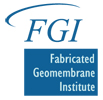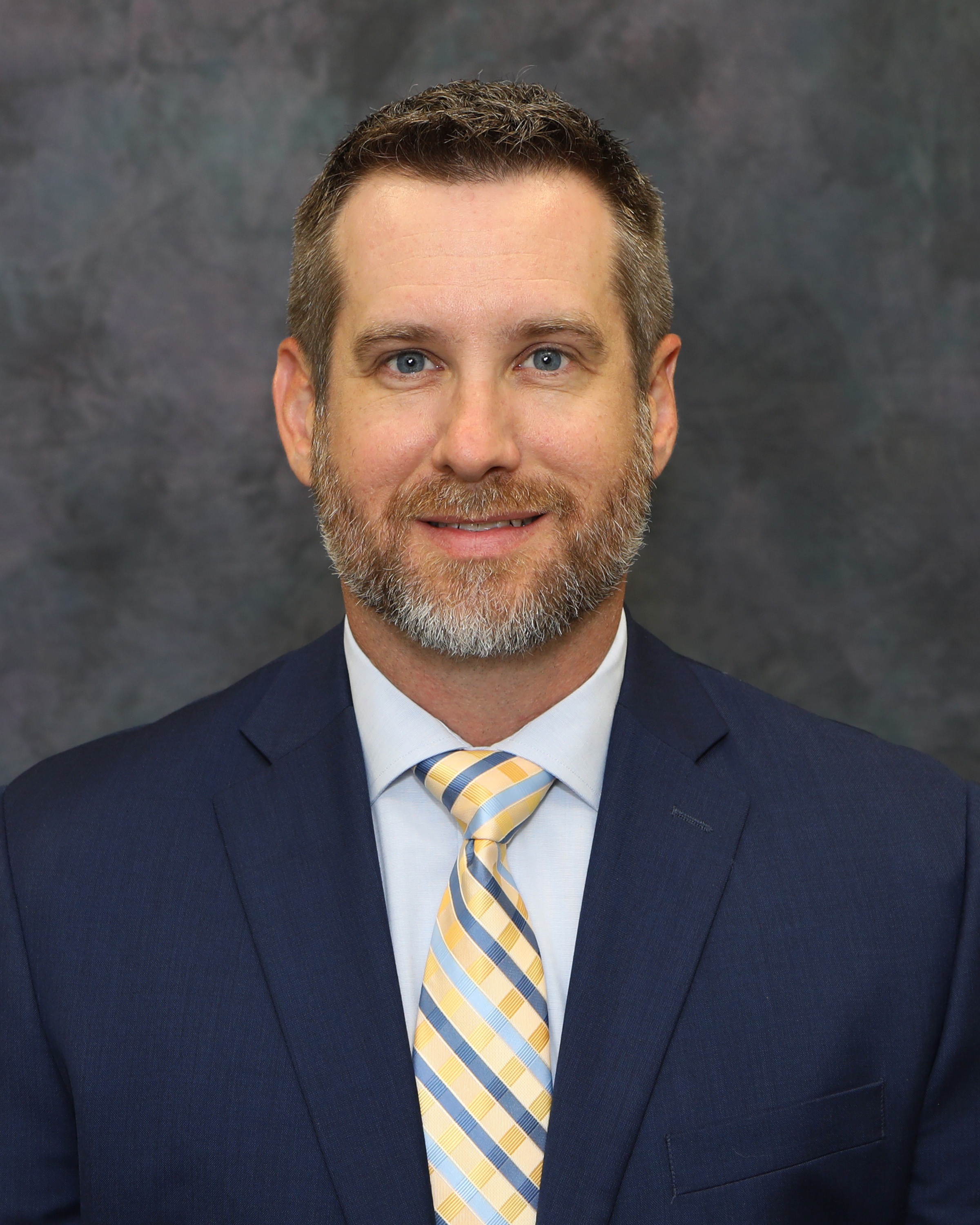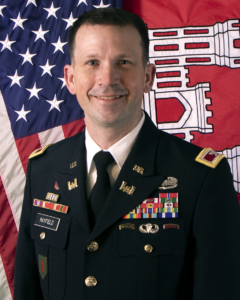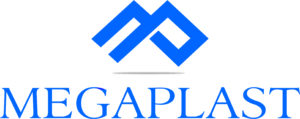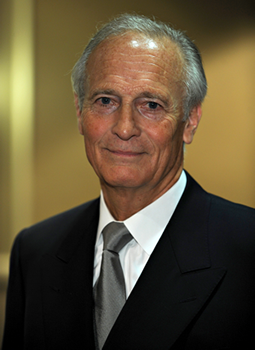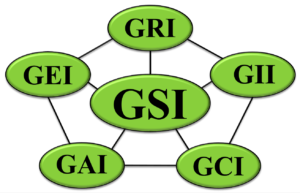|
Sunday, February 5 |
|
| 7 am–5 pm | Registration Open |
| 8 am–Noon | AM SHORT COURSES (included with all FULL registrations) |
|
Fundamentals of Geosynthetics – Part 1 - Materials
Fundamentals of Geosynthetics – Types, Functions, Selection and Performance PT 1 – Materials This short course provides an overview of geosynthetics materials. The course is independent of the Part 2 course offered in the PM session, but is complimentary. The course is intended for individuals with a desire to explore the use of geosynthetic materials in design and construction applications, and those having a need to gain a broad fundamental knowledge of the various geosynthetic types, materials and functions. The course provides a basic definition of geosynthetics, explores the various geosynthetic material types, the polymers used in manufacturing, strengths and weaknesses of the common polymers, and the physical structure of the various types of geosynthetics. The prominent roles of polymer type and material physical structure are emphasized in the effective selection and optimal performance of geosynthetics for a specific function. Geosynthetic materials discussed include geotextiles, geogrids, geocell, geomembranes and geofoam. Importance is placed upon desired function(s) in the selection of geosynthetic material class and type.
|
|
|
Geosynthetics in Erosion and Sediment Control and Erosion-Resistant Hydraulic Structures
Geosynthetics in Erosion and Sediment Control and Erosion-Resistant Hydraulic Structures Geosynthetic-enhanced erosion and sediment control systems are now used routinely in temporary construction site applications, as well as, in steep slope stabilization and shoreline and coastal erosion protection. On the construction site, geosynthetic-enhanced rolled erosion control products (RECPs) and sediment retention devices (SRDs) have become essential to pollution prevention plans. In permanent applications, geosynthetic solutions now include specially designed geotextile filters beneath hard armor systems, and deploying advanced erosion protection technologies such as anchored geotextiles, geocellular containment systems, fabric-formed concrete revetments, and sand-filled geosynthetic mattresses, tubes, and other containers. This short course will provide and detailed look at all these emerging technologies and how they are being used to cost-effectively protect against erosion from rainfall, runoff, stream flow, and shoreline wave action. |
|
|
Landslide Remediation with Geosynthetics-Evaluation Methods and Construction Techniques
Landslide Remediation with Geosynthetics-Evaluation Methods and Construction Techniques Increased rainfall amounts and intensities, along with prolonged wet periods have created slope instabilities along our roadway embankments and rivers/streams channel sideslopes. The exact causes of these vary, but the threat to public safety is a constant. This short course will assess the causes, discuss the evaluation of alternate solutions and present construction case histories which include a wide range of resilient landslide remediation solutions for each of the unique challenges presented with each project. This course will highlight recent projects that balance geotechnical needs, hydraulics, local and federal permitting requirements, wetland impacts, special river designations, costs, unique site constraints and aesthetic goals to arrive at cost effective solutions. Through a series of case histories, we will review design and constructed solutions ranging from hard armored riprap and gabion walls to vegetation faced geosynthetic reinforced soil slopes with various erosion resistant faces as well as shallow soil anchors or grouted hollow bar reinforcement installed on a reconstructed slope face.
|
|
|
Marketing in the Geosynthetics Industry
Marketing in the Geosynthetics Industry While the global geosynthetics industry is relatively small (an international geosynthetics conference may attract at most 2500 people), it is uniquely intense with many companies providing services ranging from geosynthetic products, geosynthetic installations, and expertise related to geosynthetic design, application, and testing. Most professionals in the geosynthetics industry have achieved much of their expertise during their professional career with a fortunate few having had geosynthetic -related curriculum in school. The geosynthetic industry involves many with disparate educations ranging from classic geotechnical, civil and environmental engineering to technical backgrounds in chemistry, polymer engineering and materials science. Still others in our industry are solely trained based on multi-year experience with geosynthetic manufacturing, handling, installation, and testing. From a marketing and sales communication perspective, this dynamic industry poses an especially challenging environment to establish meaningful communication with our collective customers. Indeed, navigating the multiple geosynthetic-related associations and non-profits, and their cultures and contributions can be daunting. Yet, these same organizations play a strategic role in standardizing and promoting geosynthetic technologies and applications – a key benefit to geosynthetic sales professionals. They stand as platforms for collective education and community held expertise as compared with company-specific messaging promoting the unique attributes of a product or service. So, how is one to sell products or services in such a dynamic and competitive industry? This half-day course is appropriate for business development and sales professionals working in the geosynthetics industry. It is appropriate for new hires, young starters, and seasoned professionals. Students will explore the different geosynthetic industry sales environments and how general and broad appreciation for the industry and its organizations can greatly enhance the success of sales efforts. Narratives commonly heard about geosynthetic types and features and their relative performance will be explored and evaluated in a non-competitive, safe environment. Healthy and positive sales techniques will be discussed and rehearsed. Students will gain an intense and expanded appreciation for the uniqueness and greatness of the global geosynthetics industry and its opportunities. |
|
| 12:30–3:30 pm |
Kansas City BBQ and Brew Tour
* Ticketed Event, additional registration required. |
| 1–5 pm | PM SHORT COURSES (included with all FULL registrations) |
|
AASHTO 2020 Design Methods of Geosynthetic-Reinforced Walls
AASHTO 2020 Design Methods of Geosynthetic-Reinforced Walls This short course provides an overview of the AASHTO 2020 methods for the design of geosynthetic-reinforced walls. Discussed are the Stiffness Method, the Limit Equilibrium Method, and the Simplified Method. While the main focus will be on internal stability, aspects such as complex geometries, surcharge loads, external stability and seismic design will be discussed as well. Instructive examples will be used to demonstrate the fine points of each method while showing the differences in the design outcomes. To expand the number of comparative cases, both programs MSEW+ and ReSSA+ will be used.
|
|
|
Construction on Soft Soil using Geosynthetics
Construction on Soft Soil using Geosynthetics This course will on focus the use of geosynthetics to address the challenges of construction on poor soil conditions. Commonly used and innovative techniques will be discussed at an introductory level, including Geosynthetic Encased Columns (GECs), Prefabricated Vertical Drains (PVDs), High Strength Basal Reinforcement and Load Transfer Platforms. Technical information about specification parameters and design using geosynthetics will also be introduced. |
|
|
Designing For a Zero-Leak Containment Facility
Designing for a Zero-Leak Containment Facility The old adage that “all liners leak” does not have to be a foregone conclusion. All leaks in lining systems have a direct cause including accidents, installation issues, poor craftsmanship, inadequate material testing, and poor design decisions. A holistic approach to leakage is taken in this course to address both short-term and long-term sources of leakage. Using state-of-the-art Electrical Leak Location (ELL) technologies, leaks can be remedied before a containment facility is put into service. Employing best practices for Construction Quality Assurance (CQA) can eliminate leaks that develop over time due to poor installation practices. In short, the reduction or even elimination of leakage starts in the design phase with good project specifications. This course provides Engineers with the tools they need to write better specifications aimed at reducing or even eliminating leakage, as well as providing practical tools for designing for a target leakage rate. Course Outline:
|
|
|
Fundamentals of Geosynthetics – Part 2 - Applications
Fundamentals of Geosynthetics – Types, Functions, Selection and Performance PT 2 – Applications This short course provides an overview of geosynthetics material applications. The course is independent of the Part 1 course offered in the AM session but is complimentary. The course is intended for individuals with a desire or need to gain a broad fundamental knowledge of the various applications of geosynthetic materials. Functions explored include separation, drainage, stabilization, reinforcement, impervious barriers and containment, erosion control and lightweight fill. Emphasis is placed on how polymer type, material structure, compatible function and cost combine to serve a variety of specific applications efficiently and effectively for the broad range of products available. Applications are explored for a range of geosynthetic materials including geotextiles, geogrids, geocell, geomembranes, geofoam and a variety of erosion control and turf reinforcement products. |
|
| 7–8:30 pm |
FGI Annual Meeting (organized by: FGI)
FGI Annual Meeting |
|
Monday, February 6 |
|
| 7 am–6:30 pm | Registration Open |
| 8–9:30 am |
Opening Keynote and Breakfast | Kansas City Levees Project: Reliability and Resilience
More Information: Kansas City Levees Project Website |
| 9:45–11:45 am | WORKSHOPS |
|
Geosynthetic Reinforced Embankments on Soft Foundations
Geosynthetic Reinforced Embankments on Soft Foundations The design and construction of embankments on very soft foundations is one of most challenging geotechnical problems. Without some type of foundation soil improvement, failures are common especially on very soft sites. Soil reinforcement with geosynthetics is often the only economical solution, and some projects could not be constructed without geosynthetics. The lecture begins with a brief overview of conventional treatments for soft ground construction. Early case histories, mostly failures, are described that provided valuable lessons and concepts that we use today for design and construction. Analysis and design procedures are then outlined, along with the selection of the required properties for the geosynthetics and embankment soils. Sample specifications, cost considerations, as well as inspection and instrumentation are also described. Because proper construction is so critically important for success of these projects, a detailed discussion of construction procedures completes the course. Detailed lecture notes and copies of the course slides will be available. |
|
|
Geosynthetic Stabilization of Granular Layers in Paved Roads
Geosynthetic Stabilization of Granular Layers in Paved Roads Geosynthetic stabilization is often associated with a paved road when an aggregate base/subbase is constructed over a subgrade having CBR ranging from 3 to 8 (FHWA, 2008). The main benefits of unbound aggregate layer stabilization include (1) decreasing time-dependent rutting by providing an increased modulus of unbound aggregates at the time of construction and added confinement from compaction-induced geosynthetic tension and (2) minimizing degradation of the modulus of unbound aggregates over time by proper control of lateral displacements in unbound aggregates and maintaining initial confinement of unbound aggregates. The identified mechanism is the development of lateral restraint through tension and shear transfer to minimize the lateral displacement of unbound aggregates. Both friction and interlocking between aggregates and geosynthetics contribute to the base stabilization. Modern design procedures are needed for establishing more common use of geosynthetics for base stabilization within the framework of a mechanistic-empirical pavement design approach. This workshop is intended to present, review an discuss the latest developments in the quantification of aggregate layer stiffness characteristics of the geosynthetic-aggregate geocomposite, aka, the mechanically stabilized layer. Through presentations and discussion, a path to development of modern design procedures will be presented. |
|
|
Learn The Concept of The Dewatering Tube System Through Experience
Learn The Concept of The Dewatering Tube System Through Experience Geotextile tube is proven to be a cost-effective solution for some hydraulic and civil engineering applications. In addition to this, geotextile tube is also recognized as a good approach for some dewatering needs. And there are many factors that can affect the dewatering performance of a geotextile tube; besides the characteristics of slurry, the selection of geotextile, and the selection of polymer and its dosing ratio are also key factors. This workshop will focus on understanding how the selection of geotextile and polymer’s dosing ratio affect the dewatering performance of geotextile tube by practical experiment.This is a hands-on dewatering workshop |
|
|
30 Years of Lessons Learned on Geomembrane Installation Quality
30 Years of Lessons Learned on Geomembrane Installation Quality Geomembranes are a vital and primary barrier to prevent of environmental contamination. Given the critical role of geosynthetics in environmental containment systems, correctly executing field construction is imperative to successful projects. So where do you go to learn correct construction processes, quality control, quality assurance and common pitfalls? The answer for most is you don’t. As a word of mouth trade there has been a significant lack of formalization of field processes. This workshop is here to share lessons learned from over 30-years of field CQA throughout the United States. We will share lessons learned from all project phases – from conception through operations, as each phase is critical to long-term performance of the geomembrane barrier. Issues that should have been caught are often missed or overlooked, leading to potential catastrophic long-term impacts on the ability of a geomembrane to meet its designed/required containment objectives. Lack of knowledge is a key reason things get missed during construction. Attendees will examine physical samples from the field, view numerous photographs and/or video while given a detailed discussion of key visual indicators, consequences, preventative measures, and proper resolution of issues. Discussions will also include proven best practices that are often overlooked or not used. Topics will include: tips for identifying potentially suspect/inferior materials before shipment to site; discussion of common and not so common pitfalls in geomembrane containment system installations which compromise quality objectives; and the often-misunderstood limitations of new/developing technologies. Two hours may not make you an expert of Geosynthetics but it can revolutionize how your field construction is executed to ensure better projects and a better environment. |
|
| Noon–1:30 pm | Awards Luncheon |
| 1:30–3 pm | TECHNICAL SESSIONS |
|
ROUND TABLE DISCUSSION: Women in Geosynthetics
ROUND TABLE DISCUSSION: Women in Geosynthetics The Fabricated Geomembrane Institute at the University of Illinois has created a group titled, “Women in Geosynthetics (WIG)” in order to promote the advancement of women in the geosynthetic industry through education, networking and mentoring opportunities. Women in Geosynthetics is hosting this panel/round table discussion that includes, but is not limited to the following points of interest: – maintaining a work/life balance – maximizing the benefits of social media – opportunities for women in the geosynthetics industry – recruiting women into the geosynthetics industry – professional and collegiate mentorship opportunities
– partnering women professionals with female graduate and undergraduate students |
|
|
PANEL DISCUSSION: Best Practices for the Inspection of Segmental Retaining Walls
Panelists: Glen Herold, P.Eng., M.ASCE, Brampton Brick Limited; Don Armstron, PE, Oldcastle Architectural Products Group; Scott Miller, Scott Miller DesignBuild Consulting Services LLC |
|
|
Geosynthetic Properties and Laboratory Testing
Chairs: S. Mustapha Rahmaninezhad, Thang Pham and Thuy Vu, University of Texas Rio Grande Valley Long-term Hydraulic Conductivity of Bentonite-Polymer Geosynthetic Clay Liner to Coal Combustion Product Leachates An Evaluation of Soil-Geogrid Interaction Models Quantification of Suction-driven Flow of Enhanced Lateral Drainage Geotextiles Hydraulic Conductivity of Lighter Bentonite-Polymer Geosynthetic Clay Liners White Polyethylene Geomembrane: Forensic and Laboratory Evidence for Superior Durability Session sponsored by: |
|
|
SPECIAL SESSION: Alternative Backfill Materials Applicable to MSE Structures (organized by: AMSE)
Organized by: Session Chair: Robert A. Gladstone, P.E., Executive Director, Association for Mechanically Stabilized Earth (AMSE) Mechanically stabilized earth (MSE) structures depend on frictional interaction between reinforcements and reinforced backfill for their internal stability. Therefore, the physical, mechanical and electrochemical properties of the chosen backfill are critical to designing safe structures which will provide a long service life. At sites having weak foundation soils, backfill unit weight may negatively affect external stability. For any project, if naturally occurring backfill satisfying both internal and external stability requirements is not available on site or from an economical haul distance, there are alternative backfill materials which may be considered. Alternative backfills for MSE structures are typically manmade or reprocessed/recycled from manmade materials. Examples of such materials include low density cellular concrete, foamed glass aggregate, vitrified shale, clay and slate, and recycled concrete. This Special Session will educate attendees about these four alternative MSE backfills, including their physical, mechanical and electrochemical properties, their cost implications, and any special considerations when used to construct MSE structures. Example MSE projects may be mentioned in this session but, for case history presentations, conference attendees should plan to attend the companion Special Session, MSE Structure Case Histories Using Alternative Backfill Materials.
Relevant Physical Properties of Rotary Kiln Produced Expanded Shale, Clay, and Slate Lightweight Aggregate for MSE Applications Design and Construction Considerations for MSE Systems with Foamed Glass Aggregate Backfill Are We Ready to Construct MSE Walls with RCA as Backfill? Low Density Cellular Concrete as MSE Backfill
|
|
| 3:15–4:30 pm | TECHNICAL SESSIONS |
|
Hydraulic and Coastal Applications Pt. 1
Chairs: Nathalia De Castro and Drew Loizeaux, Solmax Dredging Works and Geotextile Tube Applications for The Construction of Deep C Industrial Zones, Vietnam Investigation of Geotextile Integrity Subjected to Vertical Drains Installation Use of Treated Soft Soil as Infill Material in Geotextile Tubes 25m3 Geotextile Bags and Geotextile Tubes Used to Protect a 42” Pipeline Against Scouring, 30M Deep on the Seabed, Covenas, Colombia, S.a |
|
|
Electric Leak Location
Chairs: Shawn-Milan Calendine, hydroGEOPHYSICS Inc.; Abigail Gilson-Beck, TRI Environmental, Inc.; Jimmy Youngblood, Solmax Increasing the Sensitivity of the Dipole Method: A Case Study Comparative Analysis of Electrical Leak Location Methods on Exposed Geomembranes The Effect of Cover Material Conductivity on Dipole Method Testing Development of a Conductive Textile and Its Uses in Electrical Leak Location (Ell) Survey of Geosynthetic Containment Systems Session Sponsored by: |
|
|
SPECIAL SESSION: Applications of Fabricated Geosynthetics (organized by: FGI)
Organized by:
Chair: Timothy Stark, University of Illinois at Urbana-Champaign PVC Geomembranes in Agricultural Uses Carbon Footprint Calculator Payment Bases in Liner Projects Performance Comparison of Evapotranspiration and Engineered Turf Covers Session sponsored by: |
|
|
Walls, Slopes and Embankments
Chairs: Boyd Ramsey, Boyd Ramsey Consulting Impact of Primary Geogrids Spacing and Secondary Geogrids on Geosynthetic Reinforced Soil-Integrated bridge Systems (GRS-IBS) and Lateral Earth Pressure Design of True Abutments of Mechanically Stabilized Soil Walls under high seismicity in Guatemala City Applications of Geosynthetics for Building Passive Protective Structures against Rockfall, Debris Flows and Snow Avalanches Embankment Reinforcement Using the World’s Strongest Geogrid – Florianopolis Ring Road, Brazil |
|
| 4:30–6:30 pm |
Exhibit Floor Reception (Sponsored by AGRU America, Inc. and Ferguson Waterworks)
Join us on the showfloor! Mix and mingle with the attendees and exhibitors from both the Geosynthetics Conference and IECA Annual Conference!
Sponsored by: |
| 7:30–9:30 pm |
Young Professional Event
Join us at Sinkers Lounge! Are you 40 or under? Or support young professionals in the industry? Join us for the 2023 IECA and Geosynthetics Conference Young Professional Event hosted at Sinkers Lounge. Sinkers Lounge is the only place in Kansas City where you can enjoy a leisurely round of indoor minigolf paired with a craft cocktail. We’re taking the best parts of your childhood mini golf and added a few twists! – Includes mini golf, tabletop mini golf, one (1) drink ticket and bar snacks. |
|
Tuesday, February 7 |
|
| 7 am–5 pm | Registration Open |
| 8–9:30 am |
Robert M. Koerner Award and Lecture: From Zero Leak at end of Geomembrane Installation to Zero Leakage in Service
From Zero Leak at end of Geomembrane Installation to Zero Leakage in Service
|
| 9 am–5 pm | Exhibit Floor Open |
| 9:45–11:15 am | TECHNICAL SESSIONS |
|
Case Histories
Chairs: John Lostumbo, Solmax; C. Joel Sprague, TRI Environmental, Inc. Lessons Learned From Three Failures Reinforced Soil Embankment for Rockfall Protection – Case History Mitigation of Cracks in Flexible Pavements With Expansive Subgrade Using Geosynthetics: A Case Study in Austin, Texas Lining A Highly Irregular Vertical Wall with Polyurea/Conductive Geotextile Geomembrane The Use of Geotextile Tubes as the Containment Dyke for the Construction of Davao Coastal Highway, Philippines Five Geotextile Tube Projects Review for Survivability and Performance After Decades in Challenging Environments |
|
|
SPECIAL SESSION: MSE Structure Case Histories Using Alternative Backfill Materials(organized by: AMSE)
Organized by: Session Chair: Robert A. Gladstone, P.E., Association for Mechanically Stabilized Earth Numerous MSE structures have been built using manmade or reprocessed/recycled materials such as low density cellular concrete, foamed glass aggregate, vitrified shale, clay and slate, and some industrial waste products. These materials are often selected because of their lower unit weights compared to naturally occurring backfills. Reduced unit weight can help address design challenges caused by settlement-prone or otherwise poor foundation soils, but the selected backfill must also have the properties necessary for MSE structure stability and long term performance. Presenters in this Special Session will provide case histories of geosynthetic-reinforced (and one or two steel-reinforced) MSE structures constructed with alternative backfills, including referencing project conditions driving backfill selection and any special construction practices related to use of that backfill. Conference attendees should plan to attend the companion Special Session, Alternative Backfill Materials Applicable to MSE Structures, for more detailed information on several alternative MSE backfills. Critical Considerations for Using Alternative Backfill Materials MSE Wall Experience with Alternative Backfill Materials Alternative Backfills for MSE Structures Lightweight Cellular Concrete Case Histories Utilizing Geosynthetic Reinforcement
|
|
|
PANEL DISCUSSION: Chin Wagging with Esteemed Geosyntheticans
Chin-Wagging with Esteemed Geosyntheticans Panelists: Melissa Holbrook; Solmax; Daniel Selander, WINFab USA, GMA; Michael Simac, Earth Improvement Technologies, Inc.; Han Wang, PhD candidate, University of Illinois at Champaign-Urbana; Jorge Zornberg – University of Texas at Austin Panelists will participate in a moderated open discussion to talk about how they found themselves working in the geosynthetics field, what influences helped shape their path in geosynthetics, what motivates them on a day-to-day basis, what makes a good geosythetican, what they see for the future of geosynthetics, how to inspire the next generation of geosyntheticans, and more. Discussion will be spontaneous and not include any formal presentations.
|
|
| 11:30 am–1:30 pm | Lunch |
| Noon–1 pm |
Student Research Showcase
Organized by: GMA and IGS-North America are pleased to announce the Student Research Showcase. This poster competition is intended to highlight the work of students in geosynthetics while offering an opportunity to present on the show floor during the Tuesday lunch break. An Evaluation of Soil-Geogrid Interaction Models Assessment of Effects of Geosynthetics Made from Recycled Plastics on Reinforcing Road Base Effectiveness of Geogrid Stabilization of Airfield Pavements Investigated Using Embedded Sensors Effectiveness of Geosynthetics in Aggregate Stabilization – Evaluation using Bender Element Sensor Technology Evaluation of Geosynthetic-reinforced Asphalt Milling Characteristics and Suitability as Pavement Base Course Experimental Investigation of Geocell Reinforcement in Mitigating Freeze-Thaw Damages to Roads Feasibility Evaluation of Lightweight Aggregate to Improve Performance of Load Transfer Platforms in Geosynthetic-reinforced Embankments Hydraulic Conductivity of Bentonite-Polymer Geosynthetic Clay Liners to Aggressive Coal Combustion Product Leachates Investigation of Moisture Reduction in Unsaturated Soils using Geotextiles New Geotextile Quarry By-Product Geocomposite System for Permanent Road Foundation Quantification of Suction-driven In-plane Flow of Enhanced Lateral Drainage Geotextiles |
| 1:30–3 pm | TECHNICAL SESSIONS |
|
Geosynthetics in Roadways
Chairs: Dr. V Vinay Kumar, University of Texas at Austin; Dr. Danial Mirzaiyanrajeh, Solmax Effect of Tensile Strength Development in Stabilisation Geogrids on Bearing Capacity in Pavements and Railway Application Role of High-Modulus Geogrids in Improving Base Layer Properties Local Stiffness Enhancement by Multi-Axial Geogrid Stabilization Evaluated Through Shear Wave Measurement Evaluation of Geosynthetic-reinforced Asphalt Milling Characteristics and Suitability as Pavement Base Course Role of Geosynthetics in Improving Freeze-Thaw Resistance of Bases – A Literature Survey |
|
|
Innovative Solutions pt. 1
Chairs: Joseph Scalia IV, Colorado State University; Drew Loizeaux, Solmax Polymeric Alloy Geocell Reinforced Design for a Heavily Loaded Gravel Pad with Restricted Fill Thickness Emerging Uses of Geosynthetic Floating Covers in the Energy Sector Feasibility Evaluation of Lightweight Aggregate to Improve Performance of Load Transfer Platforms in Geosynthetic-reinforced Embankments Geogrid-Reinforced Timber Pile Supported Modular Block Retaining Wall |
|
|
SPECIAL SESSION: Panel Discussion - How to Write a Good Geomembrane Spec (organized by: FGI )
Organized by: |
|
| 3:15–4:45 pm | TECHNICAL SESSIONS |
|
SPECIAL SESSION: Recent Advances in MSE Walls Analysis, Design and Performance
Chairs: Richard J. Bathurst, Royal Military College Of Canada; Patrick J. Fox, Pennsylvania State University Effect of Spread Footing Loads on Stability of Geosynthetic-Reinforced Retaining Walls Migrating From the Simplified Method to the Stiffness Method for Internal Stability Design of MSE Walls New Closed-Form Analytical Solutions for Total Reinforcement Force in a GRS Retaining Wall at the Limit State |
|
|
SPECIAL SESSION: Exposed Geosynthetic Performance (organized by: GSI)
Organized by: Chair: George R. Koerner, Geosynthetic Institute (GSI) Evaluation of the UV Exposure of Polymeric Geomembranes Using Geographic and Climate Data Engineered Turf Landfill Closure: How Long Will It Last? Exposed NPNW GT Exposed Npnw GT Performance at a Large Surface Impoundment For Nearly One Year Exposed Geomembrane Cover Performance at Polk County Landfill in Florida |
|
|
Hydraulic and Coastal Applications Pt. 2
Chairs: Nathalia De Castro and Drew Loizeaux, Solmax Hydraulic Roughness Testing of Geosynthetics Effectively Utilizing a Nature-Based HPTRM Solution for Municipal Drainage Channels Shoreline Protection in Kerala Coastline (India) And Use of Geosynthetics |
|
|
SPECAL SESSION: Panel Discussion - Improved Pavement Design - A Different Conversation (organized by: FHWA)
Organized by: Panelists: John Donahue, Missouri Department of Transportation; Jennifer Albert, Federal Highway Administration; Raul Velesquez, Minnesota Department of Transportation This panel of pavements engineers will discuss the current state of pavement design and construction from their perspectives in state departments of transportation (DOT) and the Federal Highway Administration (FHWA), and will address common barriers and opportunities for increased use of geosynthetics in pavements. |
|
| 4:45–5:15 pm |
Annual GSI Meeting (organized by: GSI)
Meeting Agenda • Introductions, value, and mission • Administrative tasks • Board of Directors elections • Review of GRI-Research, GEI-Education, GII-Information, GAI-Accreditation and GCI-Certification • GSI’s Affiliated Organizations • Fellowships • Review of Quality Tracking Metrics • Future activities • Adjourn |
| 5:30–7 pm | International Geosynthetics Installers Association (IAGI) GeoGames Reception |
| 6–6:45 pm | IGS North America General Meeting |
|
Wednesday, February 8 |
|
| 7:30 am–2 pm | Registration Open |
| 8–9:30 am | TECHNICAL SESSIONS |
|
GMA Annual Meeting and Invited IGS Presentation
The Geosynthetic Materials Association (GMA) will hold its biennial General Membership meeting at Geo’23 on Wednesday, February 8th from 8-9:30am. The GMA Executive Council leadership will highlight the current technical, educational, and legislative activities with a detailed update on the Federal, State and Local lobby efforts. Additionally, GMA, as part of an effort to enhance cooperation with the various geosynthetic organizations, has invited Sam Allen, the president of the International Geosynthetic Society (IGS), to provide an update on the current endeavors of the IGS committees. His presentation is summarized here; Bringing Geosynthetic Contributions to Life! In his invited remarks, the President of the IGS, Sam Allen, will describe the work of the IGS in defining and promoting the benefits of using geosynthetics in modern day engineering. He will present how the IGS is defining how their every day use in water management and transportation related construction is essential to achieving lower carbon footprint targets and more sustainable infrastructure projects. |
|
|
SPECIAL SESSION: Fabricated Geosynthetics for Water Retention Projects (organized by: FGI)
Organized by: Chair: Timothy Stark, University of Illinois at Urbana-Champaign Best Practices for Design and Installation of Geosynthetic Floating Covers Operation and Maintenance Guideline for Water Reservoirs Chambers Dam Reservoir Remediation: Case Study New Developments in PVC-EIAs for Potable Water Containment Applications Netherlands Motorway Underpass Case Study Session sponsored by: |
|
|
Mining Applications
Chairs: Prabeen Joshi, Arcadis Canada; Mark Simpson, Layfield Group Initial Stress Condition and the Hydraulic Conductivity of BPC Geosynthetic Clay Liners for Acidic Heap Leach Solutions High Performance Geomembranes in Aggressive Mining Applications Sustainable Practices with Geosynthetics in Mining: Review of Select Case Studies |
|
|
Innovative Solutions pt. 2
Chairs: Joseph Scalia IV, Colorado State University; Drew Loizeaux, Solmax Evolution in Geosynthetics Starts with Utilizing Data Technology Decentralized Stormwater Runoff Treatment with Active Geocomposites New Geotextile Quarry By-Product Geocomposite System for Permanent Road Foundation Simplified Model for Analysis of Piled Embankment Considering Multi-Interaction Arching and Subsoil Consolidation |
|
| 9 am–2 pm | Exhibit Floor Open |
| 9:30 am–11:20 am |
Exhibitor Showcase
Learn more about featured exhibitor’s products by attending these casual 20-minutes presentations on the show floor in the Learning Zone (Booth 435).
View full showcase descriptions here. |
| 9:45–11:15 am | TECHNICAL SESSIONS |
|
SPECIAL SESSION: Importance of Operation and Maintenance Manuals (organized by: FGI)
Organized by: Panelists: Duff Simbeck, Simbeck and Associates, Brian Fraser, Layfield Geosynthetics, Glen Toepfer, CQA Solutions, Matthew Kemnitz, Leak Location Services, Inc. |
|
|
Landfill Covers and Liner Systems
Chairs: Ming Zhu and Rutuparna Joshi, Watershed Geosynthetics Remediation of a Former Quarry and Permanent Containment of Buried Toxic Materials Hydraulic Conductivity of Bentonite-Polymer Composite Geosynthetic Clay Liners Under Elevated Temperature and Extreme pH Environmental, Social, and Governance (ESG) Offerings of an Engineered Turf Final Cover System Practical Aspects of Exposed Geomembrane Cap (EGC) Design and Construction Session sponsored by:
|
|
|
Geosynthetic Wettability and Performance
Chairs: Xiong Zhang, Missouri University of Science & Technology; Guoping Zhang, University of Massachusetts Amherst Hydrophobizing Treatment in Saline Soil: Conditions and Mechanisms Efficacy of Nonwoven Based Geosynthetic Drainage Product for Pore Pressure Reduction in Moderately Fine Soils or Tailings Investigation of Moisture Reduction in Unsaturated Soils using Geotextiles Experimental Investigation on the Effect of Fines Content on the Drainage Performance of Wicking and Non-wicking Geotextiles |
|
| 11:30 am–1:30 pm | Lunch |
26 PDHs available.
*schedule subject to change.
 TEXTILES.ORG
TEXTILES.ORG



